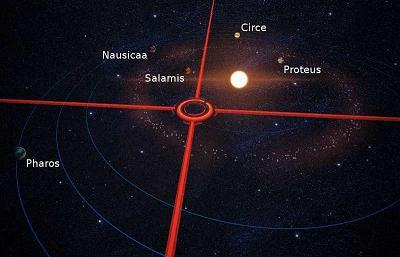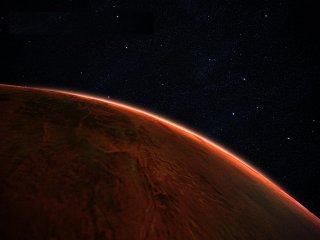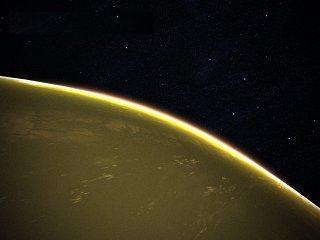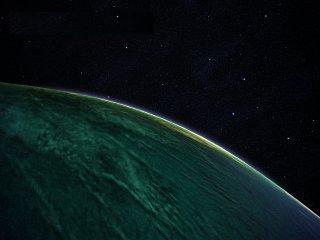
Athens News: This system now boasts an ocean-world which is mass-producing underwater cityscapes and submarine-aircraft-carriers.
Athens
Overall fame/aspect title: the stormy, ocean-world, Proteus.
Abstract; summation of all major producing planets within this system:
Proteus (virtually countless), Circe (helium-3 in the near future).
Overall fame/aspect title: the stormy, ocean-world, Proteus.
Abstract; summation of all major producing planets within this system:
Proteus (virtually countless), Circe (helium-3 in the near future).

System: Athens

Solar System Collectives
Hierarchically Descending
---[Star Data]---
Stellar ID:
Class:
Radius:
Mass:
Luminosity:
Temperature:
Distance:
---[Planets]---
5
---[Moons]---
1
---[Asteroid Belts]---
1: (unnamed)
---[Planetoids]---
###,###+
---[Comets]---
#,###+
Stellar ID:
Class:
Radius:
Mass:
Luminosity:
Temperature:
Distance:
---[Planets]---
5
---[Moons]---
1
---[Asteroid Belts]---
1: (unnamed)
---[Planetoids]---
###,###+
---[Comets]---
#,###+
_
(N/A) Letter#
#.# sol
(N/A) #.# sol
(N/A) ## sol
##,### °K (##,### °F)
# AU
Athens (year) A
N/A
6,894 km
1.508 Earth Masses
(N/A) #.##
N/A
520 °C / 968 °F
1.3 g
1.40 atm
(N/A) #.# AU
0.4 Earth Years
58.6 Earth Hours
No; N/A
No; N/A
---[Planet Data]---
Stellar ID:
Class:
Radius:
Mass:
Keplerian Ratio:
Stellar ID:
Class:
Radius:
Mass:
Keplerian Ratio:
Luminosity:
Surface Temperature:
Day Length:Surface Temperature:
Surface Gravity:
Atmospheric Pressure:
Atmospheric Pressure:
Orbital Distance:
Orbital Period:
Orbital Period:
---[Status]---
Colonized:
Terraformed:
---[Moons]---
0
---[Rings]---
0
---[Artificial Satellites]---
0
---[Indigenous]---
N/A
Colonized:
Terraformed:
---[Moons]---
0
---[Rings]---
0
---[Artificial Satellites]---
0
---[Indigenous]---
N/A
Athens (year) B
O
10,210 km
3.307 Earth Masses
(N/A) #.##
N/A
34 °C / 93.2 °F
1.3 g
1.21 atm
(N/A) #.# AU
4.9 Earth Years
51.4 Earth Hours
Yes; 2179
Yes; 2174
---[Planet Data]---
Stellar ID:
Class:
Radius:
Mass:
Keplerian Ratio:
Stellar ID:
Class:
Radius:
Mass:
Keplerian Ratio:
Luminosity:
Surface Temperature:
Day Length:Surface Temperature:
Surface Gravity:
Atmospheric Pressure:
Atmospheric Pressure:
Orbital Distance:
Orbital Period:
Orbital Period:
---[Status]---
Colonized:
Terraformed:
---[Moons]---
0
---[Rings]---
0
---[Artificial Satellites]---
0
---[Indigenous]---
Humans
Colonized:
Terraformed:
---[Moons]---
0
---[Rings]---
0
---[Artificial Satellites]---
0
---[Indigenous]---
Humans
Athens (year) C
J
59,729 km
(N/A) #.### Earth Masses
(N/A) #.##
N/A
(N/A) # °C
(N/A) #.# g
(N/A) #.# atm
(N/A) #.# AU
57.6 Earth Years
14.0 Earth Hours
Yes; year
No; N/A
---[Planet Data]---
Stellar ID:
Class:
Radius:
Mass:
Keplerian Ratio:
Stellar ID:
Class:
Radius:
Mass:
Keplerian Ratio:
Luminosity:
Surface Temperature:
Day Length:Surface Temperature:
Surface Gravity:
Atmospheric Pressure:
Atmospheric Pressure:
Orbital Distance:
Orbital Period:
Orbital Period:
---[Status]---
Colonized:
Terraformed:
---[Moons]---
0
---[Rings]---
0
---[Artificial Satellites]---
0
---[Indigenous]---
N/A
Colonized:
Terraformed:
---[Moons]---
0
---[Rings]---
0
---[Artificial Satellites]---
0
---[Indigenous]---
N/A
---[Planet Data]---
Stellar ID:
Class:
Radius:
Mass:
Keplerian Ratio:
Stellar ID:
Class:
Radius:
Mass:
Keplerian Ratio:
Luminosity:
Surface Temperature:
Day Length:Surface Temperature:
Surface Gravity:
Atmospheric Pressure:
Atmospheric Pressure:
Orbital Distance:
Orbital Period:
Orbital Period:
---[Status]---
Colonized:
Terraformed:
---[Moons]---
0
---[Rings]---
0
---[Artificial Satellites]---
0
---[Indigenous]---
N/A
Colonized:
Terraformed:
---[Moons]---
0
---[Rings]---
0
---[Artificial Satellites]---
0
---[Indigenous]---
N/A
Yes; year
No; N/A
Athens (year) D
J
22,479 km
#.### Earth Masses
(N/A) #.##
N/A
(N/A) # °C
(N/A) #.# g
(N/A) #.# atm
(N/A) #.# AU
141.9 Earth Years
10.9 Earth Hours




Note
Proteus has more than 90% oceanic cover. The incredible heat thrown off from Athens raises global humidity to 100%, creates constant cloud cover, and powers colossal typhoons that rage across the surface year-round.
Hot, humid, and storm-wracked, Proteus' rare combination of oxygen-nitrogen atmosphere and carbon-based biosphere nevertheless recommend it for colonization. A pilot program is studying the possibility of colonies below the ocean surface, safe from the worst effects of the weather.
Proteus has more than 90% oceanic cover. The incredible heat thrown off from Athens raises global humidity to 100%, creates constant cloud cover, and powers colossal typhoons that rage across the surface year-round.
Hot, humid, and storm-wracked, Proteus' rare combination of oxygen-nitrogen atmosphere and carbon-based biosphere nevertheless recommend it for colonization. A pilot program is studying the possibility of colonies below the ocean surface, safe from the worst effects of the weather.
Note
Traces of sodium in the atmosphere give Nausicaa its overall dark grey color, but it is otherwise a typical hydrogen-helium gas giant. An abundance of water vapor in the upper atmosphere accounts for its white clouds.
Traces of sodium in the atmosphere give Nausicaa its overall dark grey color, but it is otherwise a typical hydrogen-helium gas giant. An abundance of water vapor in the upper atmosphere accounts for its white clouds.
Note
Circe is a modestly sized hydrogen-helium gas giant with traces of sulfur and chlorine. These give it its striking yellow-green tint. As the development of the Proteus colony continues, Circe will likely be developed for helium-3 mining.
Circe is a modestly sized hydrogen-helium gas giant with traces of sulfur and chlorine. These give it its striking yellow-green tint. As the development of the Proteus colony continues, Circe will likely be developed for helium-3 mining.
Note
The geological properties of Salamis have been scanned from orbit, but little else is known about it. Due to its thick carbon dioxide atmosphere and proximity to the energetic star Athens, the equatorial daytime temperatures have been known to turn the surface molten. The crust is composed of iron with deposits of platinum group metals.
The geological properties of Salamis have been scanned from orbit, but little else is known about it. Due to its thick carbon dioxide atmosphere and proximity to the energetic star Athens, the equatorial daytime temperatures have been known to turn the surface molten. The crust is composed of iron with deposits of platinum group metals.
Major Regions
Continents
Continent
Cities
Oceans
Ocean
Cities
Continent
Cities
Oceans
Ocean
Cities
D = Destroyed / ruins
Albums
Photos
x
x
Videos
x
x
x
x
Videos
x
x
C = Classified
Major Regions
Continents
Continent
Cities
Oceans
Ocean
Cities:
Ithaka
Continent
Cities
Oceans
Ocean
Cities:
Ithaka
D = Destroyed / ruins
Albums
Photos
x
x
Videos
x
x
x
x
Videos
x
x
C = Classified
Albums
Photos
x
x
Videos
x
x
x
x
Videos
x
x
C = Classified
Major Regions
Continents
Continent
Cities
Oceans
Ocean
Cities
Continent
Cities
Oceans
Ocean
Cities
D = Destroyed / ruins
Major Regions
Continents
Continent
Cities
Oceans
Ocean
Cities
Continent
Cities
Oceans
Ocean
Cities
D = Destroyed / ruins
Albums
Photos
x
x
Videos
x
x
x
x
Videos
x
x
C = Classified


Stellar Mass:
Stellar Class:
Luminosity:
Planets:
Moons:
Asteroid Belts:
Asteroids:
Additional Objects:
N/A
N/A
N/A
5
1
1
0
0
Salamis
薩拉米斯


變形桿菌
Proteus
瑙碳化矽機管局
Nausicaa

Circe
喀耳刻

Pharos
燈塔

系統
雅典
---[Planet Data]---
Stellar ID:
Class:
Radius:
Mass:
Keplerian Ratio:
Stellar ID:
Class:
Radius:
Mass:
Keplerian Ratio:
Luminosity:
Surface Temperature:
Day Length:Surface Temperature:
Surface Gravity:
Atmospheric Pressure:
Atmospheric Pressure:
Orbital Distance:
Orbital Period:
Orbital Period:
---[Status]---
Colonized:
Terraformed:
---[Moons]---
1: (unnamed)
---[Rings]---
0
---[Artificial Satellites]---
0
---[Indigenous]---
N/A
Colonized:
Terraformed:
---[Moons]---
1: (unnamed)
---[Rings]---
0
---[Artificial Satellites]---
0
---[Indigenous]---
N/A
Yes; year
Yes; year
Athens (year) E
P
7,623 km
1.276 Earth Masses
(N/A) #.##
N/A
-176 °C / -284.8 °F
0.9 g
0.04 atm
(N/A) #.# AU
275.4 Earth Years
47.4 Earth Hours

Albums
Photos
x
x
Videos
x
x
x
x
Videos
x
x
C = Classified
Major Regions
Continents
Continent
Cities
Oceans
Ocean
Cities
Continent
Cities
Oceans
Ocean
Cities
D = Destroyed / ruins
Note
Distant Pharos has seen only a cursory examination by an unmanned probe. It has a trace atmosphere of nitrogen and argon. Its surface is mainly composed of tin with deposits of carbon. Deeper craters have been partly filled by ice, suggesting there may be a significant amount of water locked up beneath its frozen surface. A large, ice-bright crater in the southern hemisphere makes the planet visible from the inner system, leading to the planet's name.
There is an abandoned Magna Colony base on its moon.
Distant Pharos has seen only a cursory examination by an unmanned probe. It has a trace atmosphere of nitrogen and argon. Its surface is mainly composed of tin with deposits of carbon. Deeper craters have been partly filled by ice, suggesting there may be a significant amount of water locked up beneath its frozen surface. A large, ice-bright crater in the southern hemisphere makes the planet visible from the inner system, leading to the planet's name.
There is an abandoned Magna Colony base on its moon.
Population:
Capital:
12,470
Ithaka
Note
Athens is a medium system with five planets and an asteroid belt. It is probably named for the classical Greek city-state of Athens. All the planets in the system are named after characters and locations associated with ancient Greece.
Athens is described as "energetic".
Athens is a medium system with five planets and an asteroid belt. It is probably named for the classical Greek city-state of Athens. All the planets in the system are named after characters and locations associated with ancient Greece.
Athens is described as "energetic".
